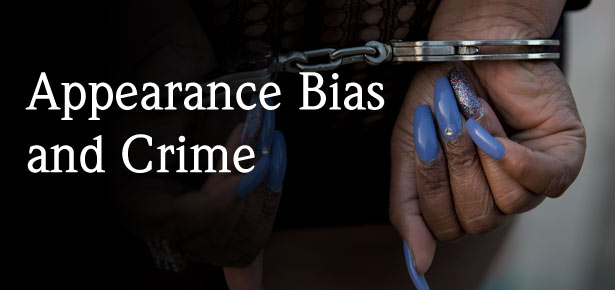
As strange as it may seem, there is very little research on the topic of physical appearance and its relationship to criminal involvement, criminal victimization, and the crime control process. While it is popularly known that young Black men are disproportionately singled out for arrest and receive harsher sentences than those with other appearance traits, often with life-threatening consequences, there is a dearth of systematic study of the relationship.
This new book explores the relationship in a range of ways. First, the selections in this edition address the process of crime control as dependent on appearance bias, from the point of suspicion to death penalty. At every stage, crime control agents (police, courts, correctional personnel) and others (the public who report crime, schools, health care professionals, etc.) make judgments about people’s physical traits resulting not uncommonly in incorrect assessments. For instance, if a person with societally-determined unappealing traits is suspected of being involved in crime, that person is more likely to be arrested, with a mug shot following, a court appearance following that, with conviction and sentencing as the final stage. In each stage, physical appearance can increase or decrease the likelihood of being free or being punished.
Another, inseparable consideration is appearance of crime victims. I write “inseparable” because sometimes offenders are also victims. Here we find that, albeit with caveats, attractive white people are less likely to be ensnared in the crime control system as offenders and, when they are, are treated more fairly as victims. Victimization often overlaps with criminality and is affected by physical traits.
The physical traits that comprise our judgments of criminal involvement and victimization (as well as our judgments about intelligence, personality, overall “goodness” and worthiness) are widely varied. Skin color, dentition, age, gender, body size, deformities, skin conditions, disabilities, clothing, grooming, and overall “beauty” versus or unattractiveness, etc. all can lead to judgments about criminal involvement. Some of these traits are demographic and are beyond our control, determined by genetics or simply luck. For example, poor people are less likely to have access to dental and other health care and poor people are more likely to be racial minorities. So, socioeconomic status can determine what one looks like and how that person is received by the world, as a good person (worthy of fair treatment) or a bad person (deserving of unfair treatment).
Attention is paid to the traits of the crime control actors themselves. The police presence can be service-oriented, with law enforcement personnel and their equipment serving to reassure the public that they are there to help, as when the police dress casually and are on foot. Or the police presence can be intentionally intimidating, as when law enforcement officers wear body armor and are accompanied by tanks and heavy weaponry.
Among the topics covered in this volume are as described above plus the effect of physical appearance on human trafficking, terrorism, LGBTQ status as a signal of criminality, etc. Complex interactions between variables are explored as in the relationships among LGBTQ appearance, race, and criminal assumptions. Causality is discussed as in the case of imprisonment worsening or improving the appearance of prisoners. Appearance traits are described as granular, for instance, while Blackness is an enormous factor in crime judgments, so are other racial traits notably Indigenous peoples are their treatment in the crime control system. Another minutely examined finding is the relationship between terrorist appearance and culture, with white “homegrown” appearance overlooked as terrorist while jihadi appearance is singled out as dangerously terrorist. The volume concludes with solutions to this form of social inequality, such as social movements, legislative and policy changes, and a proposal for a sub-discipline: appearance criminology.
Latest Comments
Have your say!